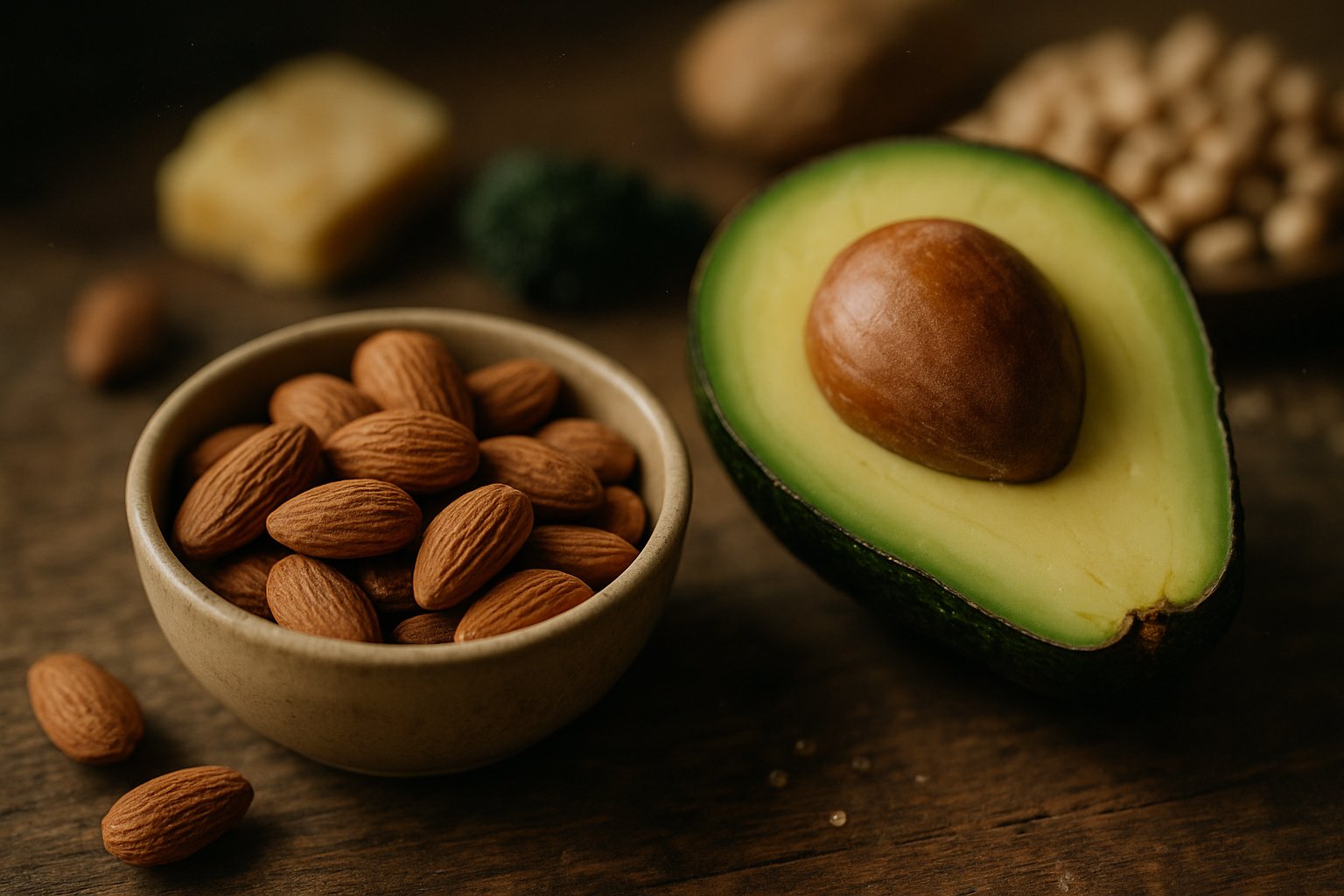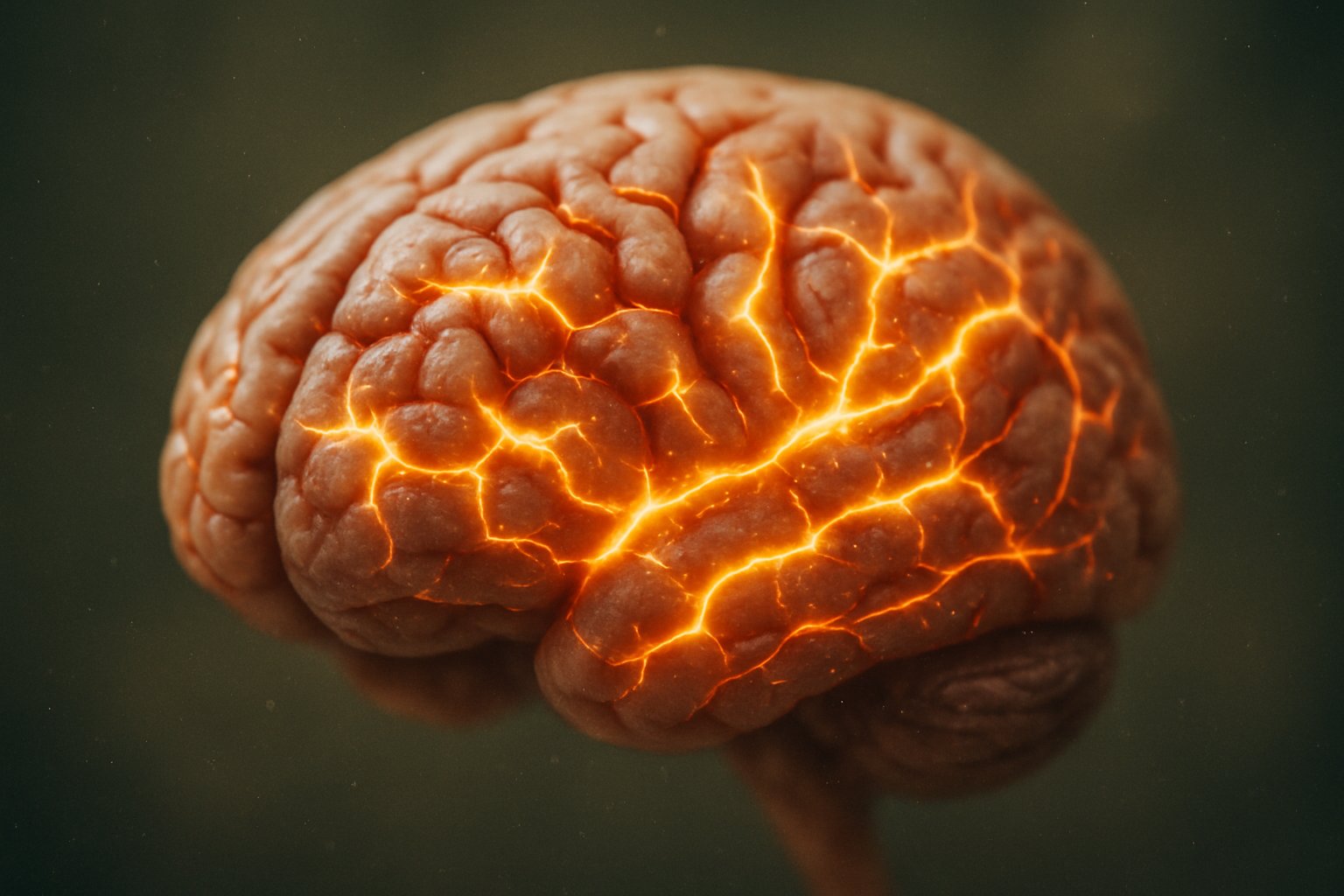Dopamine plays a crucial role in motivation, focus, and feelings of reward, yet many people experience low levels due to modern lifestyle factors. This important brain chemical influences everything from daily energy levels to the ability to feel satisfaction from accomplishments.

Research shows that specific natural methods can effectively boost dopamine production without relying on medications or supplements. These science-backed strategies range from dietary changes and exercise routines to mindfulness practices and creative pursuits that work with the body’s natural processes to enhance this vital neurotransmitter.
1. Engage in regular aerobic exercise like running or cycling

Aerobic exercise consistently boosts dopamine levels in the brain. Activities like running, cycling, swimming, and brisk walking increase blood flow to areas responsible for dopamine production.
Studies show that just 30 minutes of moderate exercise can significantly boost dopamine levels. The effects begin during the activity and continue for hours afterward.
Aerobic exercises increase blood flow to the brain, promoting dopamine synthesis and release. This process helps improve mood, focus, and motivation naturally.
Running provides one of the strongest dopamine responses among aerobic activities. The rhythmic movement and increased heart rate trigger the brain’s reward system.
Cycling offers similar benefits while being easier on the joints. Both indoor and outdoor cycling effectively stimulate dopamine production.
Swimming engages the entire body and creates a meditative effect that enhances dopamine release. The combination of physical exertion and rhythmic breathing amplifies the neurochemical response.
Regular aerobic exercise creates lasting changes in dopamine pathways. People who exercise consistently experience improved baseline dopamine function compared to sedentary individuals.
2. Prioritize 7-8 hours of quality sleep each night

Poor sleep disrupts dopamine production in the brain. When people don’t get enough rest, their dopamine levels drop significantly.
Sleep deprivation disrupts dopamine production, leading to fatigue and mood swings. This creates a cycle where low dopamine makes it harder to feel motivated and happy.
Quality sleep helps the brain reset its dopamine systems. During deep sleep, the brain clears out waste products and restores neurotransmitter balance.
Most adults need 7-9 hours of quality sleep to maintain optimal dopamine balance. Getting less than this amount can reduce dopamine activity the next day.
People should keep a regular sleep schedule. Going to bed and waking up at the same time each day helps regulate dopamine production.
Creating a dark, cool sleeping environment improves sleep quality. This allows the brain to produce dopamine more effectively during rest periods.
Sleep deprivation can lower dopamine levels, making people feel tired and unmotivated. Good sleep habits directly support healthy dopamine function in the brain.
3. Consume foods rich in tyrosine such as almonds and avocados

Tyrosine is an amino acid that serves as a building block for dopamine production in the brain. The body converts this amino acid into dopamine through a series of chemical reactions.
Foods high in tyrosine include both plant and animal sources. Almonds provide a good amount of tyrosine along with healthy fats and protein.
Avocados contain tyrosine and offer additional brain-supporting nutrients. Other excellent sources include lean meats, fish, eggs, and dairy products.
Protein-rich foods are typically the best sources of tyrosine. Salmon, chicken, turkey, and beef all contain high levels of this amino acid.
Plant-based options include sesame seeds, pumpkin seeds, and lima beans. Bananas also contain modest amounts of tyrosine.
Research shows that consuming tyrosine can enhance cognitive performance and working memory. A person weighing 154 pounds should aim for approximately 875mg of tyrosine daily.
Including these foods in regular meals helps maintain steady tyrosine levels. This supports the brain’s natural dopamine production throughout the day.
4. Practice mindfulness meditation daily

Research shows that regular mindfulness practice can enhance dopamine release in key brain areas. The effects are particularly strong in regions linked to focus and attention.
Scientific studies demonstrate that mindfulness meditation increases dopamine in areas tied to motivation and reward systems. This helps people regulate these important brain functions better.
Daily meditation strengthens the brain’s ability to produce dopamine naturally. Even short sessions create measurable changes in brain chemistry.
People can start with just 5-10 minutes of daily practice. Simple deep breathing exercises work well for beginners. Guided relaxation apps also provide easy entry points.
Regular meditation builds stronger dopamine pathways over time. The brain becomes more efficient at releasing this important chemical. This leads to better mood and increased motivation.
Meditation has been scientifically proven to enhance dopamine production, creating lasting improvements in well-being. The ancient practice now has modern research backing its benefits.
Consistency matters more than session length. Daily practice creates stronger results than longer but irregular sessions.
5. Listen to music that uplifts your mood

Music triggers dopamine release in the brain’s reward centers. When people listen to songs they enjoy, their brains produce this feel-good chemical naturally.
Music engages multiple brain areas including those responsible for emotion and memory. This creates a powerful dopamine response that can quickly improve mood.
The type of music matters for maximum benefit. Songs that give listeners chills or deeply resonate emotionally produce stronger dopamine responses than neutral music.
Creating specific playlists helps optimize this effect. People can make different playlists for work, exercise, or relaxation to match their current needs.
The dopamine boost from music happens quickly. Just a few minutes of listening to favorite songs can shift someone’s mental state from low to energized.
Personal preference plays a key role in effectiveness. What works for one person may not work for another, so individuals should choose music that personally moves them.
Regular music listening throughout the day can help maintain steadier dopamine levels and improved overall mood.
6. Set and achieve small daily goals

Small daily goals trigger dopamine release when completed. The brain rewards progress with a natural dopamine boost that builds motivation for future tasks.
Breaking larger projects into smaller steps creates multiple opportunities for reward. Each completed task signals success to the brain’s reward system.
Setting achievable goals prevents overwhelm and disappointment. When goals are too big, people often fail and miss out on dopamine rewards.
Daily goal completion builds momentum over time. Research shows that achieving small targets naturally increases dopamine and improves overall motivation.
Writing down three specific tasks each morning works well for most people. These should be realistic and possible to finish within the day.
Celebrating small wins reinforces the dopamine response. Taking a moment to acknowledge completion strengthens the brain’s reward pathways.
The key is consistency rather than perfection. Missing one day does not matter as long as the habit continues over weeks and months.
Simple examples include making the bed, drinking eight glasses of water, or walking for ten minutes. These basic tasks provide regular dopamine hits throughout the day.
7. Spend time in natural sunlight to boost dopamine synthesis

Sunlight exposure naturally increases dopamine levels in the brain. The effects go beyond just vitamin D production.
Natural light increases dopamine receptors in brain areas linked to mood and motivation. This helps improve overall mental state and energy levels.
Morning sunlight exposure works best for boosting dopamine and cortisol levels. Getting light early in the day enhances mood and alertness throughout the day.
People should aim for 10-30 minutes of direct sunlight exposure each morning. The light should enter the eyes naturally without looking directly at the sun.
Cloudy days still provide beneficial light exposure. Even overcast skies deliver enough natural light to support dopamine production.
Indoor lighting cannot replace natural sunlight for dopamine benefits. Artificial lights lack the full spectrum and intensity needed for optimal brain function.
Regular sunlight exposure helps maintain healthy sleep-wake cycles. This supports consistent dopamine production and better overall brain chemistry balance.
8. Limit intake of processed sugars and junk food

Highly processed foods pack the same dopamine punch as alcohol and drugs. This creates a harmful cycle where people need more processed food to feel satisfied.
Sugar consumption can change brain activity even without weight gain. These changes affect the brain’s reward system and make it harder to enjoy natural sources of pleasure.
The average person consumes 85 grams of sugar daily, which is far above the recommended 25 grams. This excess sugar disrupts normal dopamine function.
Adding healthy foods like lean proteins and vegetables helps reduce cravings. People don’t need to eliminate favorite foods completely.
Training the brain to prefer whole foods takes time but works. Natural sources of sweetness like fruits provide better long-term satisfaction.
Reducing processed foods helps restore healthy dopamine levels and improves overall brain function.
9. Incorporate probiotics through fermented foods like yogurt

The gut-brain connection plays a key role in dopamine production. Beneficial bacteria in the digestive system help create neurotransmitters, including dopamine.
Fermented foods naturally contain probiotics that support this process. These foods introduce helpful bacteria into the digestive system.
Yogurt is one of the most accessible probiotic foods. It contains live cultures that benefit gut health and may support dopamine production.
Other fermented foods rich in probiotics include kefir, sauerkraut, kimchi, and miso. These options provide variety for different taste preferences.
Kombucha and pickles also offer probiotic benefits. Choose varieties without added sugars for the best results.
The bacteria in these foods help maintain a healthy gut environment. This supports the body’s natural ability to produce dopamine and other important brain chemicals.
Regular consumption of fermented foods may improve both digestive health and mood. Start with small amounts and gradually increase intake to avoid digestive upset.
Fresh, refrigerated options typically contain more live cultures than shelf-stable versions. Check labels for “live and active cultures” to ensure probiotic benefits.
10. Engage in creative activities such as painting or writing

Creative activities like painting, writing, or playing an instrument can help increase dopamine levels naturally. These activities stimulate the brain’s reward pathways and promote the release of this important chemical.
The brain responds to creative work by releasing dopamine during the process. This happens when people paint, write stories, play music, or work on crafts.
Activities like painting, writing, playing music, or crafting stimulate dopamine release. The key is to pick a creative hobby that feels enjoyable rather than stressful.
Regular creative practice works better than occasional attempts. Setting aside time each week for artistic activities helps maintain steady dopamine production.
Creative hobbies also provide a sense of accomplishment when people finish projects. This completion triggers additional dopamine release, creating a positive cycle.
People don’t need special skills to benefit from creative activities. Simple activities like coloring, journaling, or playing basic songs can boost dopamine levels effectively.
Understanding Dopamine in the Brain

Dopamine serves as the brain’s primary reward chemical, driving motivation and regulating mood through specific neural pathways. This neurotransmitter operates through distinct circuits that control everything from basic movement to complex decision-making processes.
The Role of Dopamine in Motivation and Mood
Dopamine acts as the brain’s reward prediction system. When someone anticipates something pleasurable, dopamine neurons fire rapidly. This creates the drive to pursue goals and complete tasks.
The chemical doesn’t just signal pleasure. It signals the expectation of reward. This explains why people feel motivated to work toward future benefits rather than only enjoying current experiences.
Low dopamine levels cause several noticeable symptoms:
- Reduced motivation to start tasks
- Difficulty feeling pleasure from activities
- Poor focus and concentration
- Fatigue and low energy
- Mood changes and irritability
The brain releases dopamine in waves throughout the day. Morning levels typically peak, helping people feel alert and ready to tackle challenges. Evening levels drop naturally to prepare for sleep.
Chronic stress depletes dopamine reserves over time. This creates a cycle where people feel less motivated, which leads to fewer rewarding experiences and further dopamine reduction.
How Dopamine Pathways Function
Four major dopamine pathways control different brain functions. The mesolimbic pathway handles reward and motivation. It connects the brain stem to areas that process pleasure and drive behavior.
The mesocortical pathway manages executive functions like planning and decision-making. When this pathway works poorly, people struggle with working memory and attention.
| Pathway | Primary Function | Key Brain Areas |
|---|---|---|
| Mesolimbic | Reward and motivation | Ventral tegmental area to nucleus accumbens |
| Mesocortical | Executive function | Ventral tegmental area to prefrontal cortex |
| Nigrostriatal | Movement control | Substantia nigra to striatum |
| Tuberoinfundibular | Hormone regulation | Hypothalamus to pituitary gland |
Dopamine neurons communicate by releasing the chemical across synapses. The receiving neurons have special receptors that detect dopamine molecules. There are five types of dopamine receptors, each triggering different cellular responses.
The brain maintains dopamine balance through feedback loops. When levels get too high, the system reduces production. When levels drop too low, natural methods can help restore healthy dopamine function through lifestyle changes.
Science Behind Natural Dopamine Enhancement

Understanding the biological mechanisms behind dopamine production helps explain why certain lifestyle changes work better than others. Research shows that healthy habits like exercise, sleep, and nutrition can boost dopamine through specific pathways in the brain.
How Lifestyle Factors Influence Dopamine Levels
Diet directly impacts dopamine production through amino acid availability. Tyrosine, found in protein-rich foods, serves as the building block for dopamine synthesis. Foods high in tyrosine include:
- Almonds and other nuts
- Fish and lean meats
- Eggs and dairy products
- Bananas and apples
Exercise triggers dopamine release through multiple pathways. Physical activity increases the production of brain-derived neurotrophic factor (BDNF), which supports dopamine neuron health.
Sleep quality affects dopamine receptors significantly. Poor sleep reduces dopamine receptor sensitivity by up to 20%. The brain repairs and regenerates dopamine pathways during deep sleep phases.
Sunlight exposure regulates dopamine through circadian rhythm control. Morning light exposure for 10-15 minutes helps maintain healthy dopamine cycles throughout the day.
Potential Risks of Artificial Dopamine Boosters
Modern technology creates artificial dopamine spikes that can disrupt natural production. Endless scrolling, junk food, or addictive habits leave people depleted over time.
Social media platforms trigger rapid dopamine bursts followed by crashes. These quick rewards make natural dopamine sources feel less rewarding.
Processed foods high in sugar and fat overstimulate dopamine pathways. This leads to tolerance, requiring more stimulation for the same effect.
Video games and gambling use variable reward schedules that hijack dopamine systems. The unpredictable nature creates stronger addiction potential than consistent rewards.
Excessive caffeine consumption can deplete dopamine reserves. While coffee provides temporary boosts, regular overconsumption leads to receptor downregulation and withdrawal symptoms.
Frequently Asked Questions

People often have specific questions about dopamine enhancement methods, supplement effectiveness, and targeted approaches for different populations. These answers provide practical guidance based on current research findings.
What are the top foods known to enhance dopamine production?
Foods rich in tyrosine serve as building blocks for dopamine production in the brain. Almonds, avocados, bananas, and lean proteins like chicken and fish contain high levels of this amino acid.
Beets provide natural nitrates that support brain function and dopamine pathways. Dark chocolate contains phenylethylamine, which can stimulate dopamine release when consumed in moderation.
Fermented foods like yogurt and kefir support gut health. The gut-brain connection plays a role in neurotransmitter production, including dopamine.
Can certain supplements effectively raise dopamine levels?
Tyrosine supplements can boost dopamine levels naturally when taken as directed. This amino acid converts directly into dopamine in the brain.
Mucuna pruriens contains L-DOPA, a direct dopamine precursor. Research shows it can increase dopamine levels, but people should consult healthcare providers before use.
Curcumin and fish oil supplements support overall brain health. They may indirectly influence dopamine function through anti-inflammatory effects.
What natural strategies can help to stimulate dopamine release in the brain?
Regular aerobic exercise like running or cycling triggers immediate dopamine release. Physical activity also increases the brain’s sensitivity to dopamine over time.
Listening to uplifting music activates dopamine pathways in the brain’s reward centers. The anticipation of favorite songs can trigger release even before the music starts.
Completing small tasks and setting achievable goals creates natural dopamine surges. The brain rewards accomplishment with increased dopamine activity.
Are there proven ways to quickly boost dopamine levels?
Cold exposure through cold showers or ice baths can increase dopamine levels instantly. This method provides rapid but temporary elevation.
Meditation produces measurable increases in dopamine within minutes. Even brief mindfulness sessions can stimulate release and improve mood.
Protein-rich meals provide tyrosine that converts to dopamine within hours. Foods like eggs, turkey, and cottage cheese offer relatively quick effects.
How does one naturally trigger dopamine release in females?
Women can use the same natural dopamine boosting strategies that work for everyone. Regular exercise, quality sleep, and tyrosine-rich foods remain equally effective.
Hormonal fluctuations during menstrual cycles can affect dopamine sensitivity. Women may notice varying responses to dopamine-boosting activities throughout the month.
Social connections and meaningful relationships particularly benefit female brain chemistry. Positive social interactions trigger oxytocin and dopamine release simultaneously.
What practices contribute to increased dopamine activity aimed at assisting ADHD management?
Structured exercise routines help people with ADHD by increasing dopamine availability. Activities requiring focus, like martial arts or dancing, provide additional benefits.
Consistent sleep schedules become crucial for ADHD management. Poor sleep significantly impacts dopamine function and attention regulation.
Breaking large tasks into smaller, manageable steps creates frequent dopamine rewards. This approach helps maintain motivation and focus throughout longer projects.